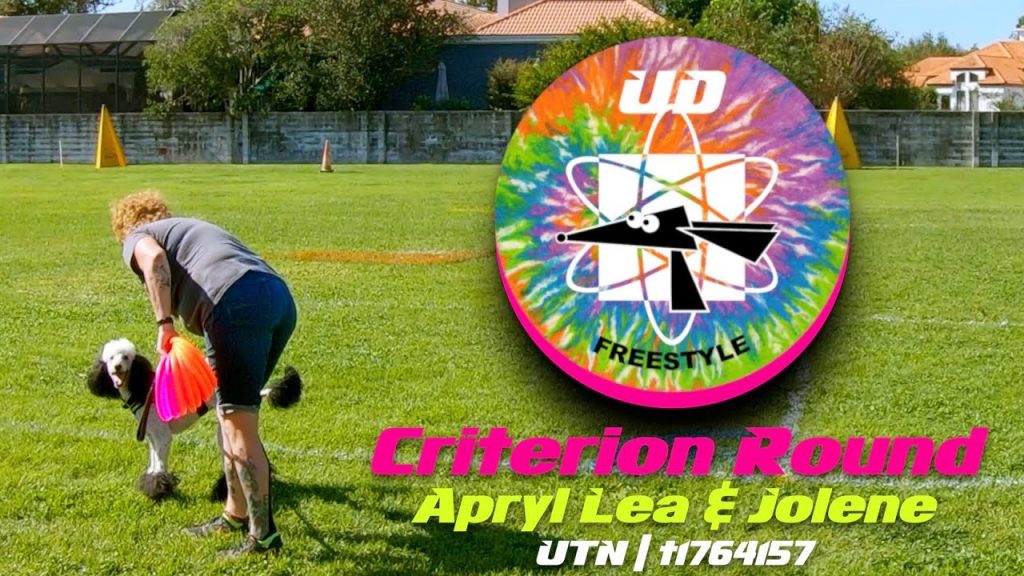
Apryl Lea & Jolene | A Shapes Comparison
A few weeks ago Apryl & Jolene were featured in DiscDogger Weekly in a piece on Shapes & Flatwork. Their performance was notable because of the distinction between Flatwork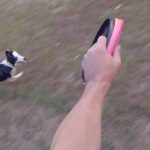 Flatwork is the stuff that happens between the catches. How the team moves and transitions, often without the disc, is flatwork. Flatwork concepts in disc dog are taken from the agility and herding... More and Shapes. Their Flatwork was solid but the Shapes were a bit weak. Apryl has since done some work on the Shapes part of her game with Jo, so let’s take a look at some subtle differences and distinctions.
Flatwork is the stuff that happens between the catches. How the team moves and transitions, often without the disc, is flatwork. Flatwork concepts in disc dog are taken from the agility and herding... More and Shapes. Their Flatwork was solid but the Shapes were a bit weak. Apryl has since done some work on the Shapes part of her game with Jo, so let’s take a look at some subtle differences and distinctions.
Changing the Game Changes the Game
First off, not all of the throws in the video above were caught, and it should not be a surprise. Changing the game changes the game. Jo and Apryl don’t work together that much. They get one session per week together.
Some of the angles were a bit of a surprise to Jolene, and if you watch closely you can see her trying to adjust. It’s cool, she’ll get better as the team puts this stuff together.
Some of the Differences
In the top video, the throw at 0:30 is made to 10 o clock. At 0:37, the throw is made to 2 o clock. Both of these were ripped straight out in front of the handler in the older video. The catch at 0:40 has Jolene a making a controlled collected leap and 4 footed landing rather than a streaking non-collected leap. The pace of the game is slowed down here and is much more conducive to leaping and safe play.
0:41 – The throughs to long throws also have some bend on them. Notice how they slow Jolene down. She misses the first one due to over pursuit but dials in the 2nd one at 0:48 and approaches it with less speed and more thought and puts a pretty little leap on it at the end. The collection is evident at 0:50.
The Zig Zag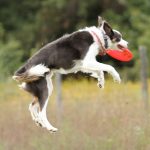 A Zig Zag is a series of catches in smooth succession that forces the dog to move back and forth across the field. Usually performed at a distance of 8-20 yards, the Zig... More at 1:03 is much slower and more thoughtful and with better throw placement most likely would have elicited nice, well collected leaps.
A Zig Zag is a series of catches in smooth succession that forces the dog to move back and forth across the field. Usually performed at a distance of 8-20 yards, the Zig... More at 1:03 is much slower and more thoughtful and with better throw placement most likely would have elicited nice, well collected leaps.
The Overhand Wrist Flip at 1:50 creates a nice little shape, expanding the flank, and with good placement would have led to a nice little collected leap.
The Overhand Wrist Flip at 2:17 is thrown out to 10 o clock, again expanding the flank and Jo puts a nice little move on it, but it’s no surprise, a blind throw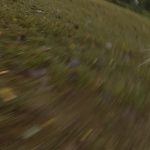 A Blind Toss is a throw that starts with the dog being unable to see the disc, the human unable to see the dog or the target, or the dog and handler unable... More with an unexpected opposite spin
A Blind Toss is a throw that starts with the dog being unable to see the disc, the human unable to see the dog or the target, or the dog and handler unable... More with an unexpected opposite spin Spins and Twists are tricks where the dog spins 360 degrees in a clockwise or counter clockwise fashion. Spin is clockwise and Twist is counter clockwise so it is important to have a... More (disc spinning counter dog running clock) often spins out on the catch. Once Jolene sees it a few times she’ll make that catch.
Spins and Twists are tricks where the dog spins 360 degrees in a clockwise or counter clockwise fashion. Spin is clockwise and Twist is counter clockwise so it is important to have a... More (disc spinning counter dog running clock) often spins out on the catch. Once Jolene sees it a few times she’ll make that catch.
Not Game Changing But Game Changing
I think it is important to note that this didn’t really change Apryl & Jo’s game. They still made some straight linear tosses. That’s cool, and helps maintain a variety of shapes.
While the changes didn’t really change what Apryl and Jo do on the field, the changes did change how they are doing it.
The pace of the game was much less frantic. The lines were softer and the ability to leap was enhanced.
This change will increase the Shapes score, but will also increase the handler’s throwing scores and the dog’s scores. The Team will benefit as well.
Jolene should see a bump up in Collection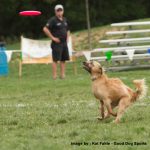 The act of preparing for a leap. Breaking stride for leaping or changing direction, collection is a key moment in the leaping process. More and Control, DriveDrive is focus and energy applied towards work. There are many kinds of Drive: social drive, tracking drive, prey drive, bite/kill, stalking, and food to name a few. Social drive, prey drive, and... More, Pace
The act of preparing for a leap. Breaking stride for leaping or changing direction, collection is a key moment in the leaping process. More and Control, DriveDrive is focus and energy applied towards work. There are many kinds of Drive: social drive, tracking drive, prey drive, bite/kill, stalking, and food to name a few. Social drive, prey drive, and... More, Pace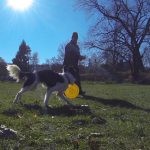 When working the flank, a dog often goes from running very hard to a more easy going pace. She adjusts her pace to match you or to read the situation. We call this... More, and Flash on the dog’s scorecard (Athleticism and Drive in other organizations).
When working the flank, a dog often goes from running very hard to a more easy going pace. She adjusts her pace to match you or to read the situation. We call this... More, and Flash on the dog’s scorecard (Athleticism and Drive in other organizations).
Apryl should see a bump up in her Throw Difficulty & Diversity and Throw Placement and Flight, and perhaps Athleticism & Showmanship.
And the Team should see a bump up in Shapes, Flatwork, Flow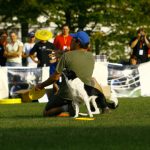 Flow is a key component of the modern day disc dog game. Keeping your dog moving with seamless, ever moving and flowing sequences with little to no set up time is the goal... More, and should get a better chance to use more of the field.
Flow is a key component of the modern day disc dog game. Keeping your dog moving with seamless, ever moving and flowing sequences with little to no set up time is the goal... More, and should get a better chance to use more of the field.
Change the Feel and Vibe
These simple changes changed the feel and vibe of their game. The game certainly felt better for Apryl to handle and throw. The pace slows down and the team starts to gel with these changes.
The vibe of the game from the judges and spectators POV changes as well. It’s not just a dog flying around out there running discs down, but it starts to look more like a team working together with a thoughtful dog jamming with her handler.
Adding some shape to your game will change the nature of your game. It’s a tremendous equalizer and provides an opportunity to showcase and highlight your dog’s abilities. Give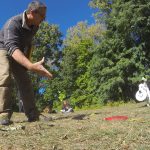 The Give is a retrieve to the hand. A cued Give is a foundational skill that is not super useful in the actual performance of disc dog freestyle, and has huge applications for... More it a shot.
The Give is a retrieve to the hand. A cued Give is a foundational skill that is not super useful in the actual performance of disc dog freestyle, and has huge applications for... More it a shot.





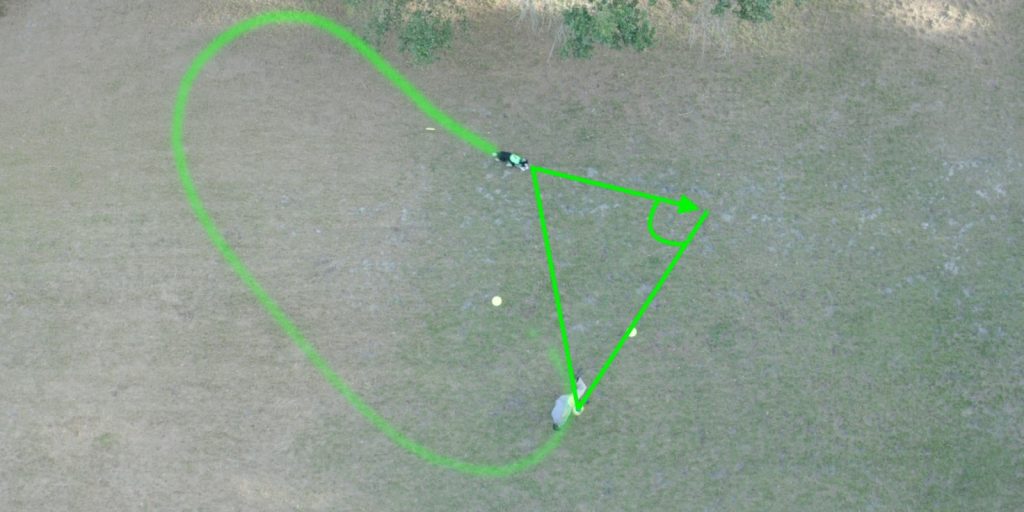
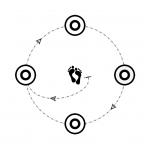

Responses